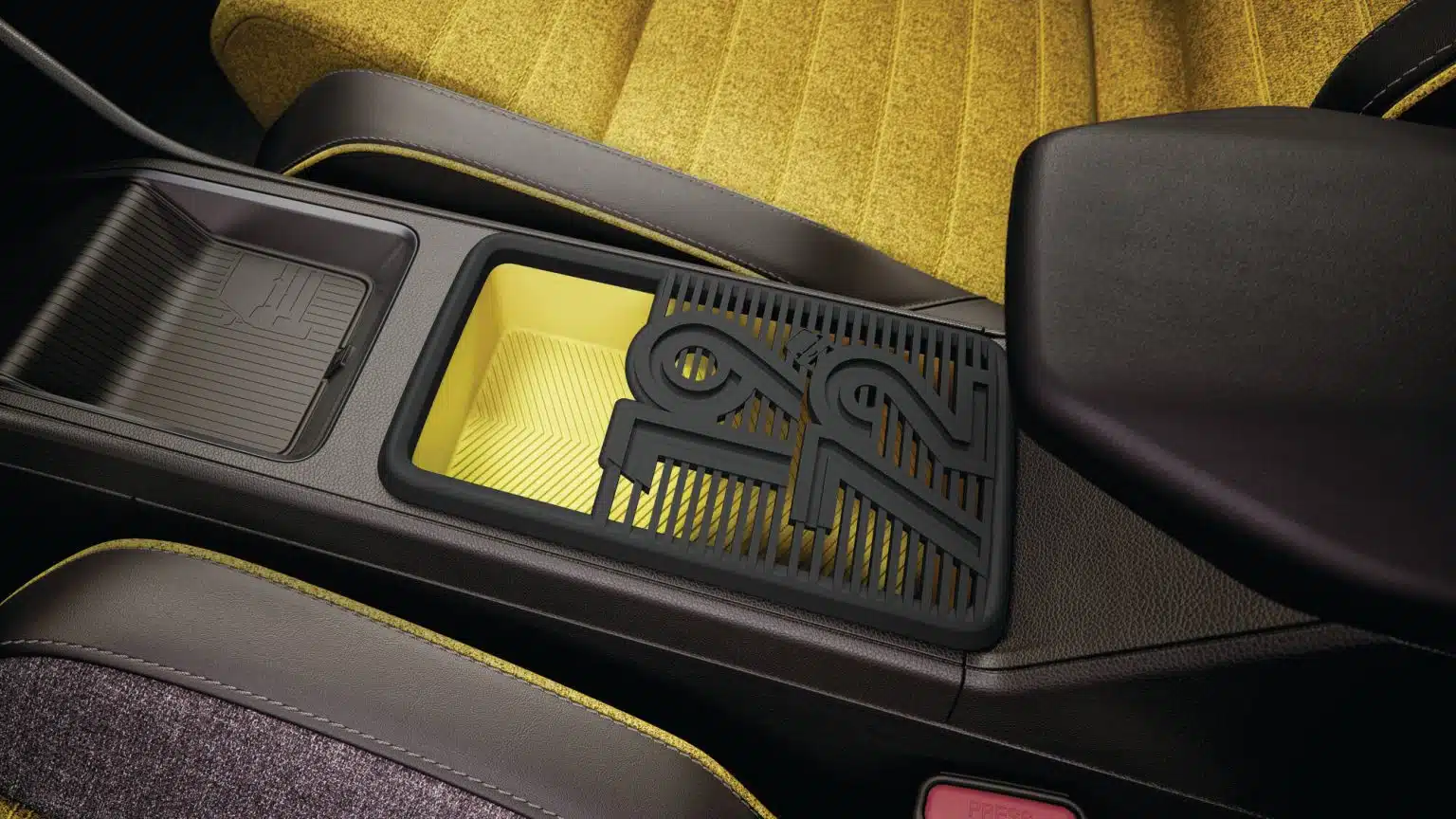Due to the required numbers, additive manufacturing (AM) has struggled to make significant inroads into vehicle interiors in meaningful numbers—at least as far as public knowledge is concerned. Typically an expensive technology, 3D printing can’t compete with the scale required for mass produced cars. For that reason, AM for end parts is usually relegated to luxury and limited runs, as well as motorsports. However, a new strategy has emerged that bridges the gap by introducing 3D printing as a means of producing accessories. We saw this with the Ford Maverick and, now, Renault has debuted its 2025 Renault 5 E-Tech Electric with customized, 3D printed interior options.

A revival of the iconic Renault 5, this electric vehicle (EV) features custom parts 3D printed at Renault’s Refactory facility in Flins, France, near Paris. The Flins site boasts a fleet of 18 3D printers, with which it produced over 11,000 parts in 2022 alone, utilizing both metal and polymer materials. This approach not only speeds up the prototyping process but, for the new vehicle line, allows for a high degree of customization, making each Renault 5 E-Tech EV unique. The 3D printed accessories are designed to add a personal touch to the interior of the Renault 5, available in three designs: numbeR5, loveR5, and witch 5. These designs can be applied to both the small and large central storage compartments and come in two color options: blue and grey.

A €52.37 billion company, Renault is not exactly a subsidiary but is part of the Renault-Nissan-Mitsubishi Alliance. As of December 2021, the Alliance was among the top electric vehicle producers globally, having sold more than 1 million light-duty electric vehicles worldwide since 2009. The organization was once headed by the notorious Carlos Ghosn, who completely reshaped Nissan under his leadership when he eliminated promotions based on seniority and age, transforming lifetime employment from a guaranteed right to an aspirational target contingent on the company’s high performance, and dismantling Nissan’s keiretsu system, a complex network of parts suppliers with mutual stakes in Nissan. The keiretsu seems to be important to how AM is working out with Japanese entities like Nikon, so it’s interesting to wonder where the automotive sector fits into this.
Priced competitively at around €25,000 and entirely manufactured in France, the Renault 5 E-Tech represents what may be less of an experiment in AM and personalization and more of a developing trend. By incorporating 3D printed parts into their vehicles in low-risk, unregulated areas, it’s possible to gauge consumer interest while also building their own additive capacity. Right now, 18 printers, likely including HP’s Multi Jet Fusion systems, is enough to produce 11,000 components annually.
Depending on the response to these hip cars and their custom 3D printed parts, the number of machines could scale. Meanwhile, advances in AM can catch up to demand so that, when the time comes for larger runs, Renault may be able to meet that demand, perhaps with automated workflows or by relying on better equipped service providers. We saw BMW execute such a strategy, testing out 3D printed accessories with MINI nameplates, among other things, and finally developing a number of automated workflows for 3D printing for metal, polymer, and sand.

At the same time, we know that other automakers are experimenting with 3D printed spares, aftermarket accessories, and the like. For that reason, SOLIZE has been successful enough with Nissan and Toyota to launch an IPO to drive the growth of its additively manufactured aftermarket parts. As digital inventory services rise, it wouldn’t be surprising for automotive to adopt AM in increasing numbers, with organizations like the 3D Printing in Auto Repair Task Force enabling the standardization and regulation of 3D printed parts for the sector. This will all ultimately lay the groundwork for 3D printing at scale.
Interestingly, the rail sector has grown incredibly quickly thanks to the efforts of Mobility goes Additive, which adopted a cross-corporate consortium approach to speed up the standardization and production of 3D printed components. Such a solution may be particularly to adopt in the automotive segment, due to the fact that the U.S., with its massive highway system, has historically been in control. In order for an Automotive goes Additive to take off, then, the U.S. will want to have a significant say in its trajectory. Either that, or multiple smaller industry bodies will form to standardize the technology, with the aforementioned Task Force representing those interests in the U.S. Either way, the example set by Renault is a case study in the bridge we’re seeing built from 3D printing as prototyping to AM as production in automotive.
Subscribe to Our Email Newsletter
Stay up-to-date on all the latest news from the 3D printing industry and receive information and offers from third party vendors.
You May Also Like
3D Printing Unpeeled: Orbex Investment, IndoMIM and HP, Ultrasonic Waves
INDO-MIM has bought three HP Metal Jet S100 printers, operating two in India and one in Texas. This is a win for HP because the company has deep experience in...
3D Printing News Briefs, April 3, 2024: Kickstarter FDM 3D Printer, Artificial Eyes, & More
In 3D Printing News Briefs today, we’re talking about an FDM 3D printer on Kickstarter, advancements in artificial eye creation, and 3D printed solenoids for electromagnets. Then we’ll move on...
Firestorm Gets $12.5M from Lockheed and Others to Automate Drone Production with 3D Printing
Firestorm Labs is advancing an initiative that has been a topic of discussion on our site for a while: automating drone swarm production. Drones are increasingly altering the landscape of...
3D Printing Leaders Team with Rivelin for Robotic Metals Post-processing
UK-based Rivelin Robotics is working on creating a manufacturing cell to automate the post-processing of metal 3D printed parts. If successful, this approach could reduce the costs of metal 3D...






























